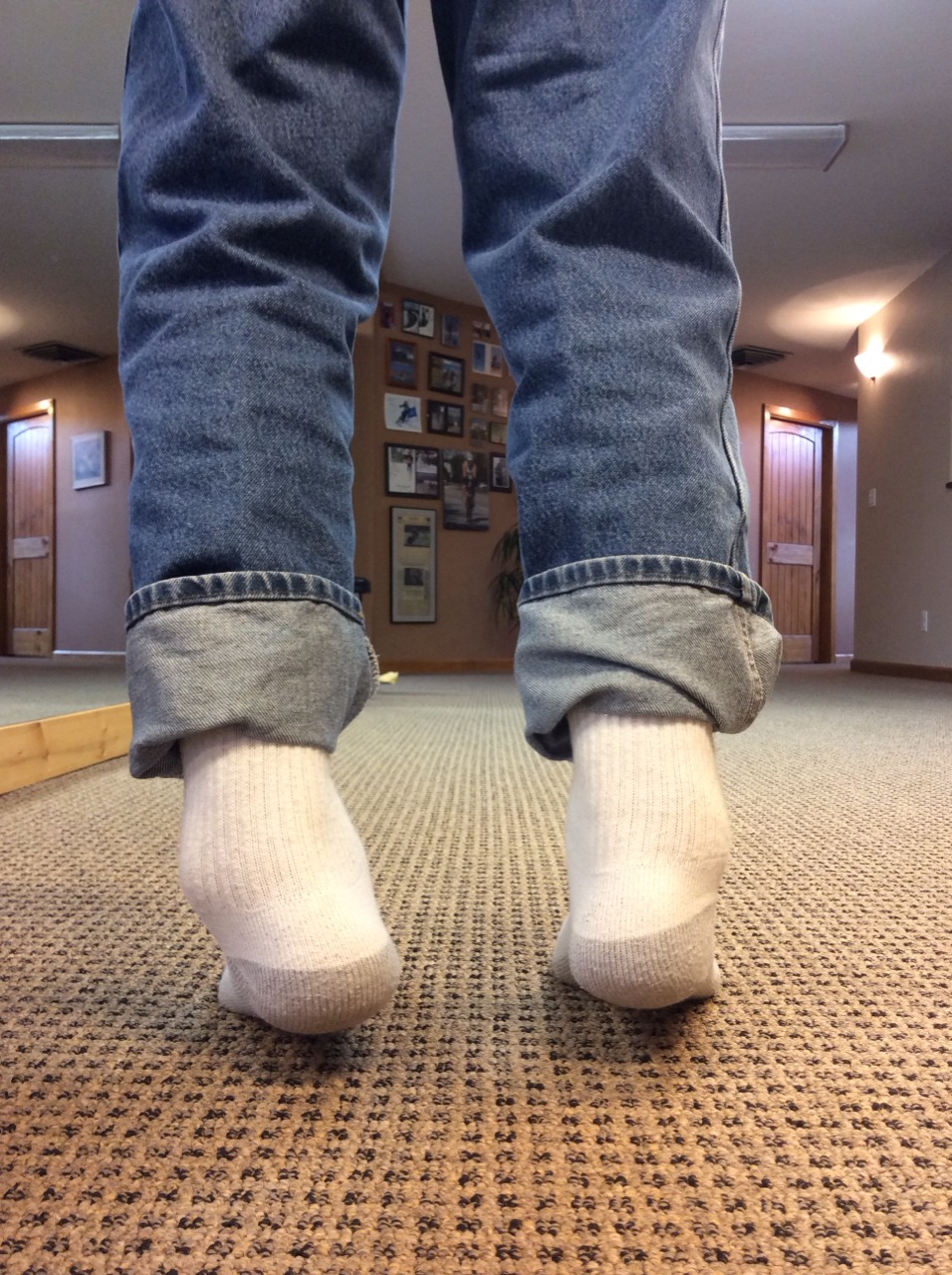The Varus Thrust Gait: A career ender.
/
As the viewer should note in the video, the right knee is undergoing a sudden abrupt varus (lateral) shift during the gait loading response. The tib-femoral joint is a sagittal hinge, not a frontal-lateral plane hinge, so this is clearly pathomechanical movement. This knee will likely undergo premature knee cartilage and meniscal degeneration.
However, there are other thoughts and considerations here. The big question is, likely, how did this happen and what is wrong ? The cause of this issue is likely more simple than complicated however there may also be multiple factors coming together in a perfect storm. However, make no mistake, in order to understand a varus thrust gait, one has to understand the why and how of the gait presentation. Additionally, one must have a clinical knowledge of the restraining systems of the knee, both active and passive, and have a high degree of clinical suspicion and working knowledge of how to assess for these types of problems.
Things to consider:
- old ACL/PCL and posterolateral corner damage (read this post here, link)
When the posterolateral corner complex of the knee is torn up from a blow to the knee or a torsional loading failure, the 3 components of the posterolateral corner (the lateral collateral ligament (LCL), the popliteal tendon, and the popliteo-fibular ligament complex). This complex attaches just in front of the origin of the lateral gastrocnemius tendon off the lateral femoral epicondyle. This complex can be blown out from either a PCL or ACL injury mechanism, these big player ligaments are rarely torn in isolation.
- is there a Pivot Shift phenomenon, likely. A positive Pivot Shift test will be present. One must know how to perform this test to confirm its presence, it can be a tricky test if one does not know the load vectors to apply and what the shift feels like and where it occurs during the test. This can be a very subtle positive test, again, first hand experience is everything.
- one must find this before surgery occurs for the ACL or PCL. Failure to find and address this damaged complex will likely result in rotational stability problems once return to play occurs. IT will not likely be noted in the initial post-operative months as the aggressive loading response will not be performed early on. Failure to address this problem will likely put ACL-PCL reconstruction success at a high risk.
Other critical factors to consider in the Varus Thrust Gait:
- is there medial knee osteoarthritis ?
- what is the foot type and what are the mechanics ? ie. Forefoot varus, Forefoot supinatus, rearfoot variances
- does the patient have excessive pronation challenges that create massive internal spin into the tibia ?
- is the hip frontal and rotation plane stable? Can the patient adequately control rotation at the hip level ?
- is there a Cross Over gait phenomenon with narrow based step width ? (search our blog and youtube for "gait guys crossover gait"). A narrow step width will create an "unstacked" limb and promote more rotational risk into the limb, often playing out at the least tolerable joint to rotation . . . the knee.
- Does the client have Tibial Varum ? Genu Varum, Genu Valgum ? These can promote and complicate the Varus Thrust gait.
- Does the client have Tibial torsion or Femoral Torsion variants ? These can promote and complicate the Varus Thrust gait.
- is there weakness of the lateral gastrocnemius or biceps femoris (to name just two the directly cross over this posterolateral interval and can offer joint compression/stability ? What about weaknesses in the medial leg ? Not that these are anywhere sufficient to offset a PLRI (posterolateral rotatory instability), but, they are secondary helpers/restraints.
One should clearly see now that the Varus Thrust gait is potentially complicated and multifactorial. One MUST understand:
1. many components of normal gait and normal anatomy from foot to pelvis, at least.
2. be able to assess for aberrant mechanics and pathologies within all joints of the lower limb
3. be able to assess for post operative rotational stability and laxity (*even a healed, yet partially attenuated, Posterolateral corner complex that was not noted or addressed in the ACL-PCL reconstruction can come back to haunt even the best reconstruction. Those little rotational instabiliites will build over the years and render attenuation of the other secondary posterior restraints in the knee. Like a Lisfranc injury, sometimes things take a few years to brew and blossom before the "career ender" instability shows up. Trust us, we have seen it enough times.
Rule: if one does not know it exists, one will miss it. If one does not know how to assess it, one will miss it. If one does not know normal anatomy, torsional variants, foot types and gait types, one is likely to be lost and left fumbling. Our clients deserve more.
Dr. Shawn Allen
Varus Thrust and Knee Frontal Plane Dynamic Motion in Persons with Knee Osteoarthritis. Osteoarthritis Cartilage. 2013 Nov; 21(11): 1668–1673. Published online 2013 Aug 12.
Alison H. Chang, PT, DPT, MS, Joan S. Chmiel, PhD, Kirsten C. Moisio, PT, PhD, Orit Almagor, MS, Yunhui Zhang, MS, September Cahue, MPH, and Leena Sharma, MD



























































